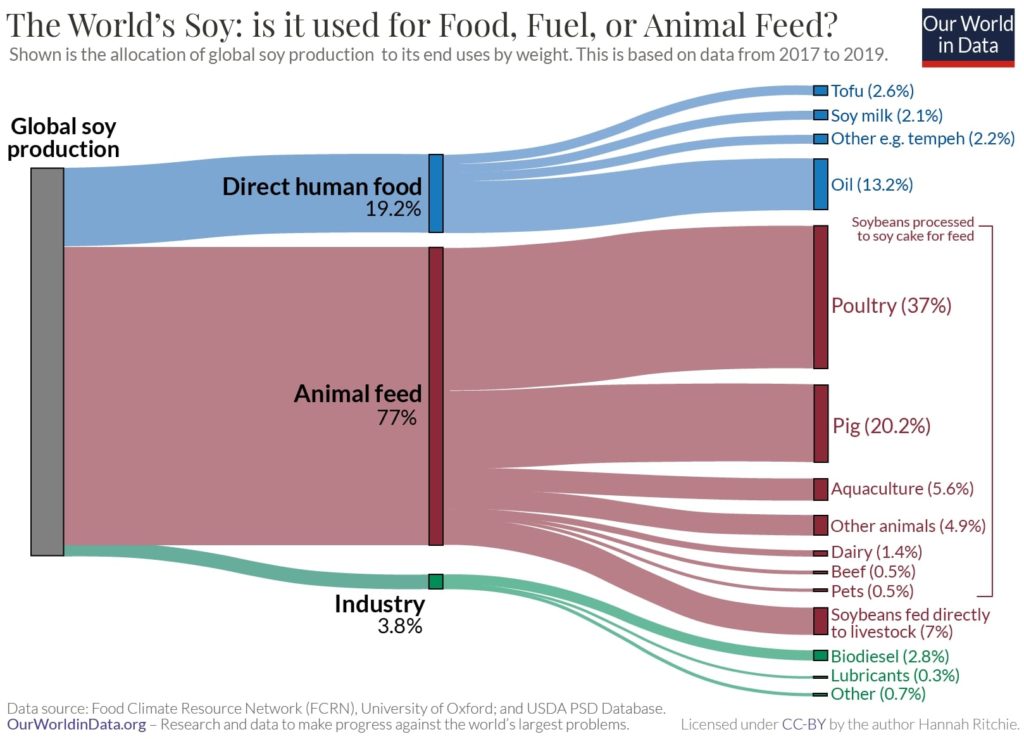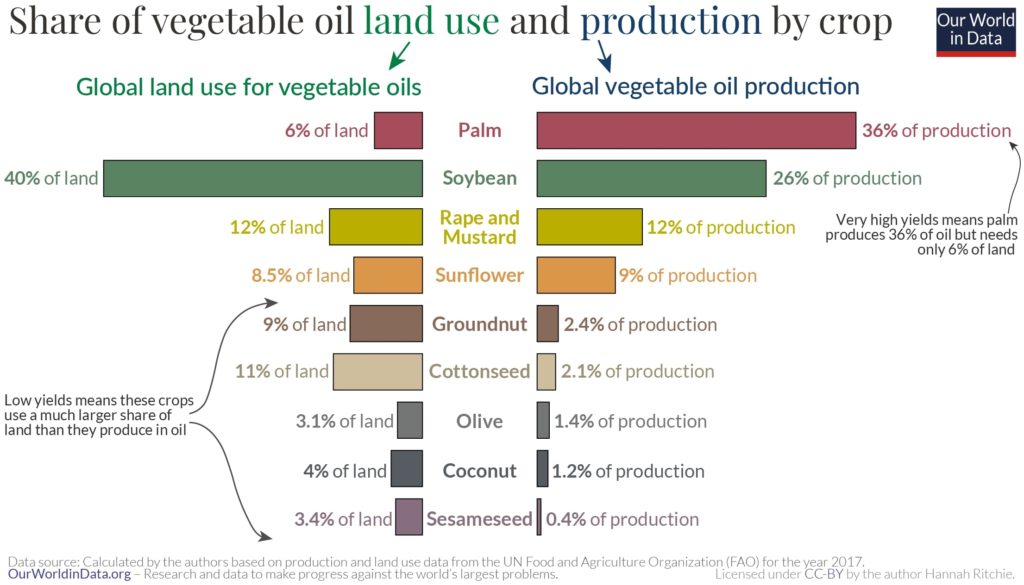As deforestation numbers keep growing, we are realizing that the main drivers (food) are rather easy to identify, but is this enough to narrow down the problem?
—
For the past 2 decades, the world has lost around 5 million hectares of forest every year to deforestation, mostly in the tropics. A third of tropical deforestation is concentrated in Brazil, home to the Amazon rainforest, where deforestation has surged to a 12-year high under far-right president Jair Bolsonaro. Alongside Brazil, Indonesia also stands out with the second largest proportion of tropical deforestation in a single country.

There is a common misconception that the leading cause of deforestation is the production of paper and wood. But in reality, food production is the leading cause of deforestation, beef, soy and palm oil in particular. In fact, three quarters of all deforestation today is linked to agriculture.
Beef
Beef bears the brunt of the responsibility for food related environmental damage, including deforestation. The clearing of pasture lands required for farmers to raise cattle to feed the growing appetite for beef contributes to 41% of deforestation worldwide – amounting to 81,081 square miles of lost forest every year – and 80% of deforestation in the Amazon. While many (but not all) governments have promised to fight deforestation, it has actually been allowed to worsen over recent years. Rising global incomes also means more people have the means to afford adding more meat and other environmentally damaging commodities to their lifestyles.
Soy
Following beef, soy is the second leading culprit of tropical deforestation, accounting for around 12% of tropical deforestation.
While increased attention has been paid to the deforestation linked to the rising demand for soy based products as an alternative to animal products, the reality is that the majority of soy is used to feed animals, not humans. Animal feed makes up 77% of soy production, while 19.2% goes directly into human foods.

So the deforestation caused by soy farming is really also driven by our animal product demand. Despite the scale of the problem, its unidimensionality should make it easier to solve.
Palm Oil
The production of palm oil is another leading driver of deforestation, particularly in South East Asia. There is a lack of consensus on the extent to which palm oil contributes to deforestation, Our World in Data places it at around 6%.
Palm oil emerged in response to the rising demand for vegetable oils in the 1960s, but really grew in popularity in the 90s due to its high yields, versatility, and low production cost. Today, palm oil is found in over two thirds of foods, from bread to chocolate to biscuits, as well as other household products like soap and shampoo.
But although palm oil is certainly a major contributor to deforestation, boycotting palm oil does not solve the problem.
Palm oil is a very efficient oil to produce, creating substantially higher yields than other oil alternatives. The graph below shows how palm oil uses just 6% of land to create 36% of global oil production, whereas other oils are substantially less efficient.

If palm oil were boycotted today and we had to use a replacement, the alternative’s production would require a huge amount of land that would invariably lead to more damage.
The issue with palm oil is not not about the palm crop itself, but rather lies in the unethical and unsustainable primary rainforest clearing and habitat destruction to make room for it.
Environmental Impacts of Deforestation
About a third of the Earth is covered in forests, comprising rich and vibrant ecosystems and home to a variety of plants and animals.
They are one of the most important carbon sinks on the planet as a whole, and the carbon they absorb is released when they are cut down or burned. Our food demand has not only caused a biodiversity crisis, with an average 68% population decrease in all observed animal populations, but has also caused 10% of greenhouse gas emissions over the past decade.
Forests are also a vital source of food, medicine, fuel and fiber, clean air and water, and furthermore control floods and prevent erosion. For many of us, they are the kind of treasure we do not realize the value of till it is gone.
Looking Forward: A Sustainable Food System?
Combating global deforestation linked to food does not require the planet to go vegan, but it does require a fundamental shift in our food system and diets.
There is a role to play for governments, producers and consumers in minimizing deforestation tied to food production.
Consumers need to reduce their consumption of animal products, from meat to dairy and eggs. There are many dietary alternatives, though force of habit can certainly make it hard to reduce one’s consumption. A consciencous effort might be too much to expect us to achieve as a species, so government can step in and regulate production, supply and pricing – if these products were priced according to what they truly cost the environment, they would be much more expensive! In a world dictated by economics, the incorrect valuation of things can lead to disaster, while the correct valuation virtually fixes the problem.
Producers have the power to decide whether they act ethically or not, although this is changing with the wave of environmentally aware investing. A large amount of money is now available only to companies that are certified as sustainable, although this trend is till new and there are some kinks to figure out. As more investors join the “green investing” ranks, more companies are doing what they must to qualify for such funds, driving the private sector in an encouraging direction.
This article was written by Lola Robinson.
You might also like: How Glaciers and Fungi are Making Climate Change Worse










![The Statistics of Biodiversity Loss [2020 WWF Report]](https://u4d2z7k9.rocketcdn.me/wp-content/uploads/2020/12/lprwinkyTHB-544x306.jpg)





